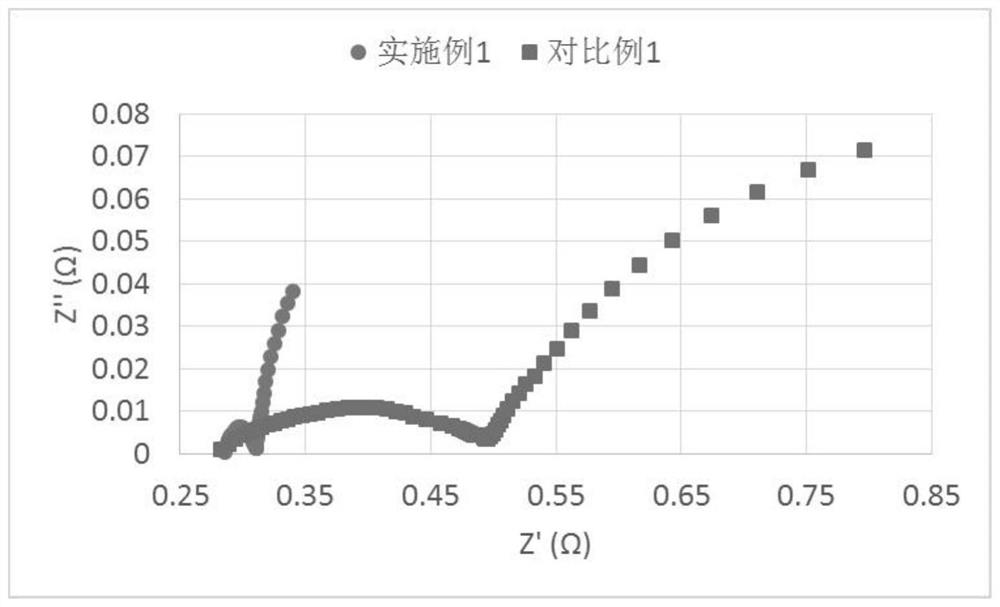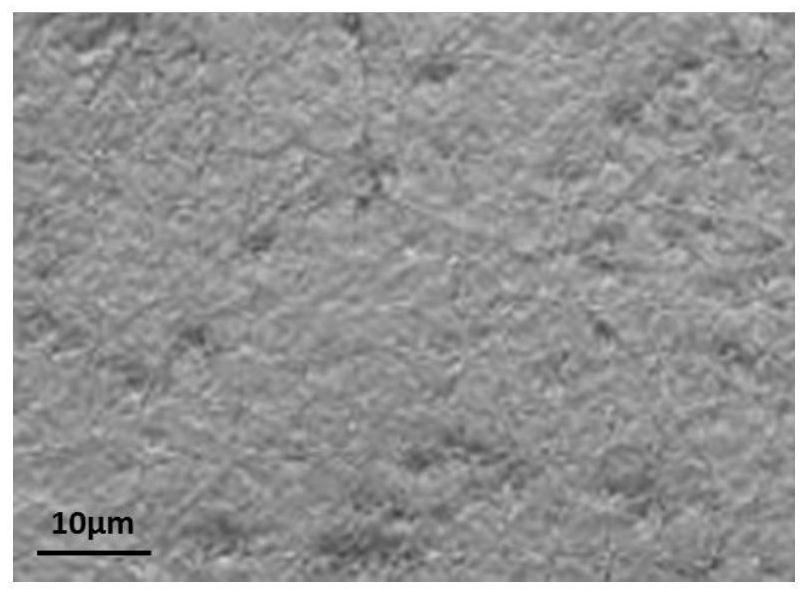A kind of electrolyte used in lithium, sodium and potassium batteries
An electrolyte and potassium battery technology, applied in the electrolyte and sodium fields of lithium and potassium batteries, can solve the problems such as the need to further improve the inhibition ability and the high risk of dendrite precipitation, and achieve easy large-scale continuous production, improve cycle performance and Safety performance, effect of suppressing precipitation
- Summary
- Abstract
- Description
- Claims
- Application Information
AI Technical Summary
Problems solved by technology
Method used
Image
Examples
Embodiment 1
[0054] Embodiment 1: In an inert atmosphere, add 4% LiPF 6 The EC / EMC (ethylene carbonate / ethyl methyl carbonate) (v=1:1) electrolyte is added with 10% of the total mass of the electrolyte tetraphenyl boron tetraphenyl phosphorus additive and mixed, and the resulting electrolyte With LiCoO 2 Assemble the positive electrode sheet, PE separator and metal Li negative electrode into a lithium metal battery, test the impedance of the battery and test the cycle performance of the battery at 0.5C / 0.5C, and take the SEM image of the metal Li after the battery has been disassembled after 50 cycles .
Embodiment 2
[0056] Example 2: In an inert atmosphere, add the total mass of the electrolyte to the DOL / DME (1,3-dioxane / ethylene glycol dimethyl ether) (v=4:6) electrolyte containing 80% LiFSI 0.01% tetraphenylboron tetrapentafluorophenylphosphorus additive and mix well, use the obtained electrolyte with carbon-sulfur composite material (in which the positive active material is sulfur, and carbon is used as the conductive skeleton and sulfur carrier) positive plate, PP diaphragm Lithium-sulfur battery was assembled with metal Li negative electrode, the impedance of the battery and the cycle performance of the battery were tested at 0.5C / 0.5C, and the SEM image of the metal Li was tested after the battery was disassembled after 50 cycles.
Embodiment 3
[0058] Embodiment 3: In an inert atmosphere, add 12% LiPF 6 The EC / DMC (ethylene carbonate / dimethyl carbonate) (v=1:1) electrolyte is added with 1% tetraphenyl boron and tetraphenyl phosphorus additives of the total mass of the electrolyte and mixed, and the resulting electrolyte is used to match Nickel-cobalt-manganese ternary (NCM) positive electrode sheet, cellulose non-woven fabric separator and Li-In alloy negative electrode are assembled into a lithium metal battery. The impedance of the battery and the cycle performance of the battery are tested at 0.5C / 0.5C. Another cycle The SEM image of the Li-In alloy tested after the battery was disassembled after 50 cycles.
PUM
 Login to View More
Login to View More Abstract
Description
Claims
Application Information
 Login to View More
Login to View More - R&D
- Intellectual Property
- Life Sciences
- Materials
- Tech Scout
- Unparalleled Data Quality
- Higher Quality Content
- 60% Fewer Hallucinations
Browse by: Latest US Patents, China's latest patents, Technical Efficacy Thesaurus, Application Domain, Technology Topic, Popular Technical Reports.
© 2025 PatSnap. All rights reserved.Legal|Privacy policy|Modern Slavery Act Transparency Statement|Sitemap|About US| Contact US: help@patsnap.com



